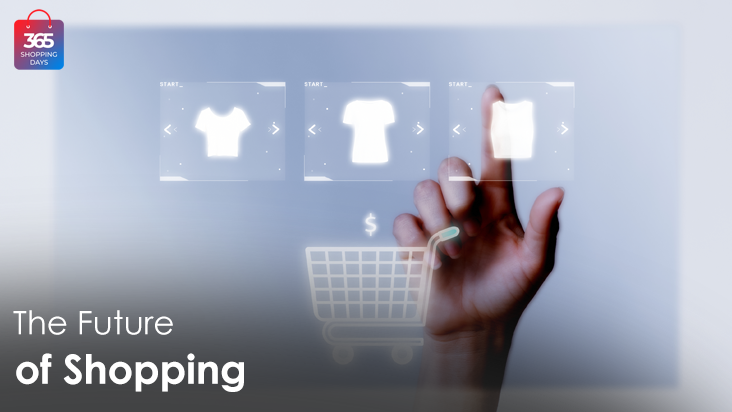As technology continues to evolve rapidly, the way we shop and interact with retailers is quickly transforming. By 2030, shopping will become an even more personalized and engaging experience, where brands must balance being technology-driven and physical stores to provide the ultimate retail experience.
From automated checkout processes to personalized recommendations, the future of shopping is sure to bring a new level of convenience, efficiency, and excitement. Imagine a world where you can find exactly what you need without leaving home.
Get ready because this is just the beginning.
The Future of Shopping: 5 Trends to Watch
After 7 years, here are the 5 popular trends we can expect to see in 2030:
1. AI (Artificial intelligence) and Robotics Will be Everywhere
Shopping in the future will be a much faster and more efficient experience thanks to the widespread use of AI and robotics. Stores can offer order-to-pickup times of less than five minutes, while computer models will manage restocking and reordering products.
Grocers will also employ robotic MFCs (micro fulfillment centers) to pick and pack products from store locations. Robots will also be used to clean and restock the stores. At the same time, pickup-only grocers will be available throughout the U.S.
By 2030, AI and robotics will be an integral part of the shopping experience and help make it a much more efficient process.
2. Quick Delivery
The future of shopping is set to be drastically different from the present, with changes to delivery expectations being especially noticeable. In 2030, 30-minute drone delivery will be available in most major cities, making it an easier and faster option to get items. However, curbside and physical stores will still be important, and most packages will be delivered in two to three days.
Same-day delivery will mostly be for retailers with a local presence and can deliver directly from those store footprints. This will be a huge shift from the traditional shopping experience, but it will make shopping easier and faster for customers.
3. E-commrece Will Dominate
The future of shopping is digital. By 2030, e-commerce is expected to be the primary shopping channel for most shoppers, with digital providing the most immersive and personalized shopping experiences. We can expect virtual stores, sophisticated social media targeting, and more precise and personalized shopping than ever before.
Ultimately, digital e-commerce will be the most important business area for many companies, offering a more efficient and convenient shopping experience that will revolutionize how we shop.
4. Experience Will Be a Key Factor
The future of shopping is all about the experience and not the products. Customers will no longer be focused on the available products, but on the experience brands provide. Companies that are the leaders in this field won’t necessarily have the best or least expensive products but the best experiences.
These experiences will be personalized and technology-driven. Customers can virtually try on and test items and customize them to their preferences. Shopping will move between the physical and digital worlds to give customers convenience and exactly what they want when they want it.
In the future, the deciding factor will be the experience and not the products. Customers can find exactly what they’re looking for and have it in the most convenient way possible. Companies that can provide this kind of experience will be the ones that stand out from the crowd and gain the loyalty of their customers.
5. Mainstream Adoption of Cryptocurrency
The adoption of cryptocurrency in mainstream retail is gaining traction, with many retailers beginning to accept cryptocurrency as a payment option. This gives customers a faster, more secure, and more cost-effective way of shopping.
For retailers, it opens up a new market and allows them to access a wider range of customers. In addition, it reduces the cost of transactions and increases customer satisfaction.
As more retailers accept cryptocurrency, it will become a more widely accepted form of payment, and it will become easier for customers to make their purchases using cryptocurrencies. This trend of cryptocurrency adoption in mainstream retail is likely to continue in the future as more retailers look to benefit from this secure and efficient payment method.
Summary
In the future, shopping will be all about the experience, not the products. Customers will enjoy a more personalized and technology-driven experience, with virtual stores and social media targeting providing a more precise shopping experience.
Companies that can provide the best experience, rather than the best or cheapest products, will be the ones that stand out and gain the loyalty of their customers. In short, the future of shopping is digital, convenient, and personalized.



